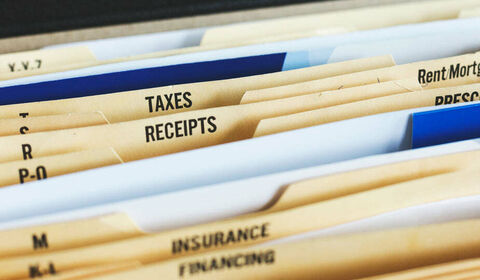Your Guide to Pensions
Pensions – an Introduction
Workplace Pensions
The Government introduced automatic enrolment for workplace pension schemes to encourage more people to save for retirement. A workplace pension is a pension scheme offered to employees by employers. Some workplace pensions are called ‘occupational’, ‘works’, ‘company’ or ‘work-based’ pensions. Broadly speaking, a workplace pension works by a percentage of an employee’s pay is automatically added to a pension scheme every payday.
The rules require employers to offer their workers access to workplace pensions. According to published statistics, over 10 million individuals have been enrolled into an appropriate pension scheme since automatic enrolment was introduced.
Employers include individuals who employ someone in a personal capacity, such as a cleaner, personal care assistant, or nanny. This means that most businesses in the UK are now obliged to set up and administer a pension scheme for qualifying employees.
What level of contributions need to be made?
For the current tax year (2024-25), the qualifying earnings bracket is set between £6,240 and £50,270. This means that no contributions will be payable on earnings below the lower threshold of £6,240 and above the higher threshold of £50,270. The Department for Work & Pensions sets these limits and reviews them annually. For example, if a worker earns £25,000, their qualifying earnings would be £18,760.
Contributions for automatic enrolment
Under the automatic enrolment rules, employers and the Government also contribute to the pension scheme. Employers and employees must make minimum contributions.
Both the employer and employee need to contribute. There is a minimum employer contribution of 3% and an employee contribution of 4%. This means that contributions in total will be a minimum of 8%: 3% from the employer, 4% from the employee and an additional 1% tax relief.
The contributions are based on the qualifying earnings brackets highlighted above; this means that for many employees, the 8% contribution rate will not be based on their full salary.
Enrolling employees
Employers are required to enrol all employees that:
- Are not already in a scheme
- Are aged between 22 and the State Pension age
- Earn more than £10,000 a year, and
- Work in the UK.
Special rules apply to employees earning less than the minimum earning threshold and those aged under 22 who wish to join the scheme. Employers (or the pension provider) must ensure that proper monitoring is in place to ensure that those eligible are included in a pension scheme.
You will not have to auto-enrol into a suitable scheme if:
- you are a director of a business with no plans to employ anyone,
- you are freelance or self-employed,
- your business has several directors, none of which has a contract of employment, or
- your business is no longer active.
However, even if you are not obliged to register under automatic enrollment, you are still an employer, and you still have a duty to inform the Pensions Regulator that this is the case.
People who move jobs will retain their workplace pension and all the contributions that have been built up. If they do not continue paying into the scheme, the money will still be invested until the pension holder reaches pensionable age. It may also be possible to combine old and new pension schemes.
Employers must ensure that eligible employees are active members of a pension within six weeks of them becoming eligible for automatic enrolment. If this has not been done, any missed contributions must be backdated.
Failure to meet any requirements of the Pension Obligations Act will be treated as a breach of the automatic enrolment regulations, and failure to comply with the various ongoing obligations will be similarly penalised. Actions taken may be restricted to warning letters, but the Regulator can issue fines and penalties. Deliberate non-compliance may result in a criminal prosecution.
Re-enrolment
Employers are not allowed to try to encourage employees to opt out of a pension scheme, which is known as 'inducement'. However, employees are allowed to opt out of a pension scheme if they so wish. They will obviously lose out on valuable contributions from their employer and the Government.
In addition, employees will usually be re-enrolled every three years and, in some cases, immediately if they or the pension scheme meet certain criteria. If this happens and an employee still wishes to opt out, they will need to complete the opt-out process again.
Accessing pension funds
Employees will usually be unable to access their pension’s savings until they are 55. There are special rules for individuals that are seriously ill. Employees will also be able to have some choice over how risk sensitive they want their investments to be. There are also Sharia-compliant and ethical funds available.
Penalties
There are many complex rules that employers must follow in implementing and running a pension scheme. Employers failing to comply with their auto-enrolment duties can trigger statutory notices, fixed penalties and even court action.
Private pension contributions
You can claim tax relief for your private pension contributions worth up to 100% of your annual earnings, subject to the overriding limits listed below. Tax relief is paid on pension contributions at the highest rate of Income Tax paid.
This means that if you are:
- A basic rate taxpayer gets 20% pension tax relief.
- A higher rate taxpayer can claim 40% pension tax relief.
- An additional rate taxpayer can claim 45% pension tax relief.
The first 20% of tax relief is usually delivered automatically, as your pension provider will claim it as tax relief and add it to your pension pot. This is known as ‘relief at source’. If you are a higher rate or additional rate taxpayer, you can claim any further reliefs on your Self-Assessment tax return. For example, every £1 invested by a higher rate taxpayer in pension contributions is effectively worth about £1.66, and every £1 invested by an additional rate taxpayer is worth around £1.80.
The Income Tax rates are different in Scotland, meaning the tax relief on pension contributions is calculated slightly differently.
- A starter rate taxpayer (in Scotland) pays 19% Income Tax but receives 20% pension tax relief.
- A basic rate taxpayer (in Scotland) pays 20% Income Tax and gets 20% pension tax relief.
- An intermediate-rate taxpayer (in Scotland) pays 21% Income Tax and can claim 21% pension tax relief.
- A higher rate taxpayer (in Scotland) pays 42% (2022-23: 41%) of Income Tax and can claim 41% pension tax relief.
- An additional rate taxpayer (in Scotland) pays 47% (2022-23: 46%) income tax and can claim 46% pension tax relief.
The annual allowance for tax relief on pensions is currently £60,000 (£40,000 up to 2022-23). There is a three-year carry-forward rule that allows taxpayers to carry forward unused annual allowances from the last three tax years (2021-22, 2022-23, and 2023-24) if they have made insufficient pension savings in those years.
Any contributions over this limit will not attract Income Tax relief, and you may also have to pay an annual allowance charge. HMRC does not tax anyone for going over their annual allowance in a tax year if they retired and took all their pension pots because of serious ill health or if they died.
The annual allowance is further reduced for high earners. Those earning over £260,000 will begin to see their £60,000 annual allowance tapered. For every complete £2 income exceeding £260,000, the annual allowance is reduced by £1 to a minimum of £10,000.
The lifetime allowance was the maximum amount of pension and/or lump sum that benefited from tax relief. In the Spring Budget 2023, the Chancellor made the unexpected announcement that the lifetime allowance (2022-23: £1,073,100) was removed from 6 April 2023 and has now been fully abolished. This measure ensures that no-one will face a lifetime allowance charge.
Most individuals can claim the maximum amount as a pension commencement lump sum (PCLS) based on 25% of the available lifetime allowance. Although the lifetime allowance has been removed, a PCLS upper monetary cap remains £268,275 (based on 25% of the 2022-23 lifetime allowance). Any individuals who already have a protected right to take a higher PCLS will continue to be able to do so.
The three-year carry-forward rule allows you to carry forward previous years' unclaimed allowances for up to three years. You do not need to report this to HMRC. If you have unused annual allowances for more than one year, you need to use the allowance from the earliest to the most recent. Any remaining balances can be used in future tax years, subject to the usual time limits. The calculation of the exact amount of unused annual allowance that can be carried forward can be complicated, especially if you are subject to the tapered annual allowance.
Page updated on 13/05/2024



